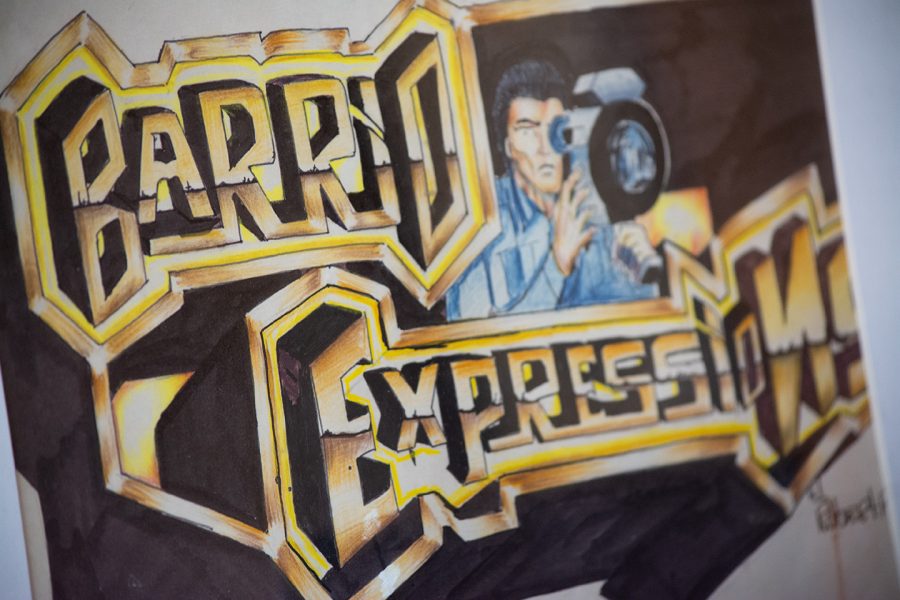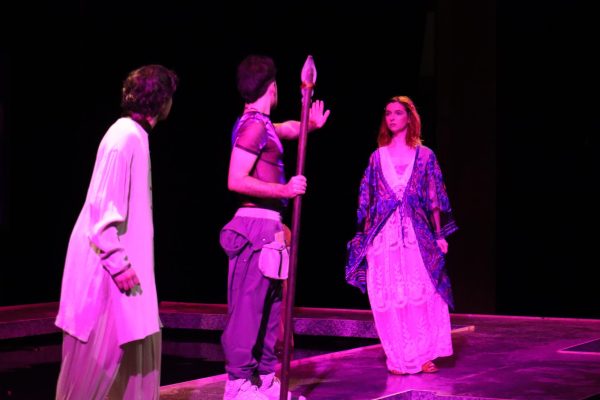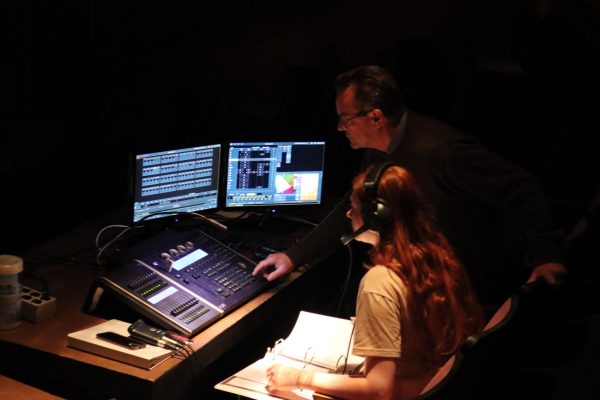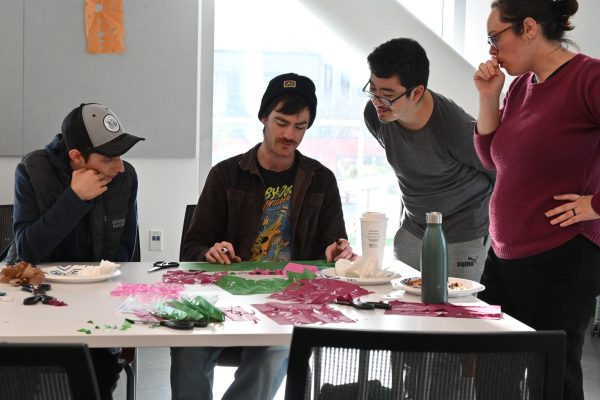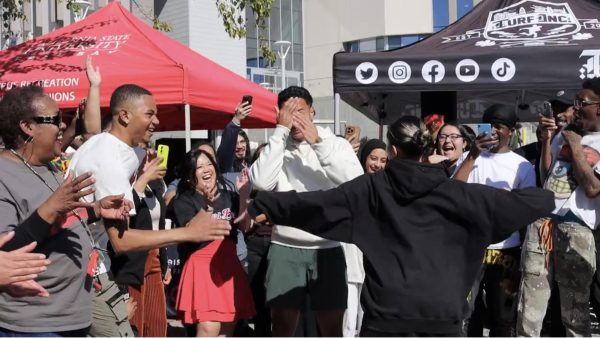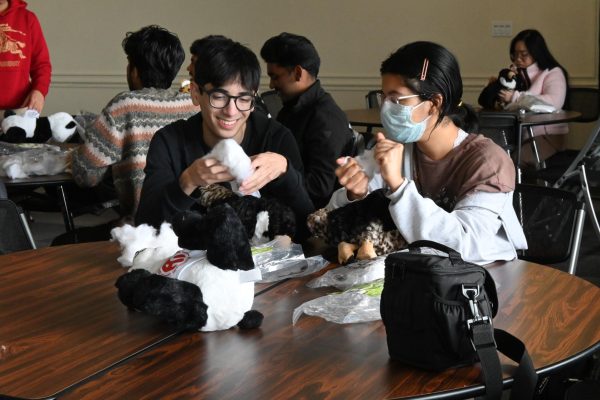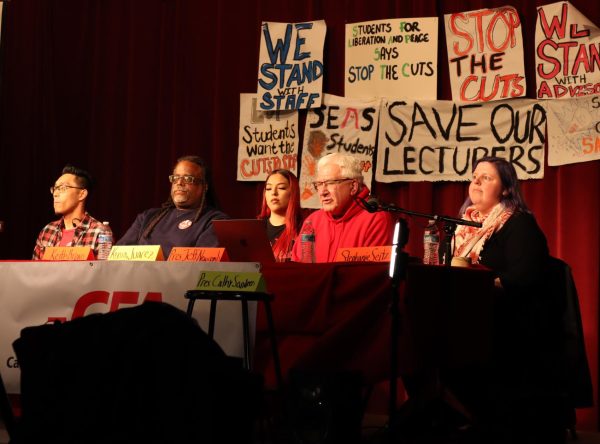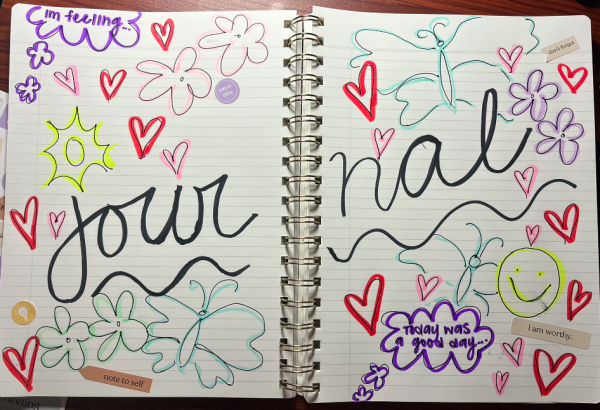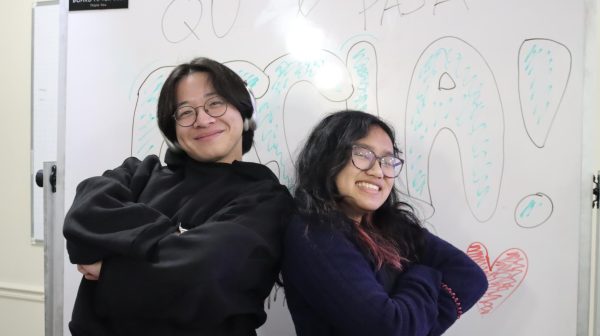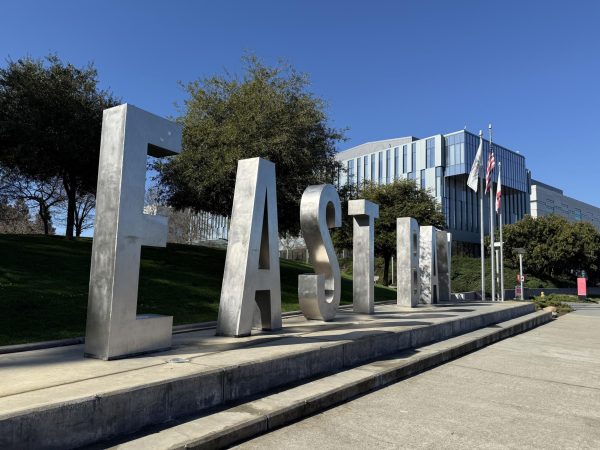Producer Juan A. Espinosa revives ‘Barrio Expressions’ TV show
Imagine yourself in Hayward during the 1970s. How would it be different or similar than today? Guest speaker Juan A. Espinosa takes us back in time and depicts the life of a young Chicano growing up in the city of Hayward.
Chicano is an ever-evolving term that identifies a person of Mexican descent born in the United States, and the acceptance of being both Mexican and American at once.
On April 25, producer Juan A. Espinosa and some of his crew members gave a lecture presentation on their cable television show, “Barrio Expressions.” “Suavecito,” by Bay Area seventies band Malo, played in the background at the beginning of the show, with clips of the streets of Hayward, colorful murals, traditional dancing and bouncing lowriders.
Starting off as amateurs without any background in film production, Barrio Expressions was a local Hayward Latino show ran voluntarily by young Chicanos who wanted representation and to bring the social issues that were affecting them in their community to the foreground. It began in 1975 as “Lo Que Es” (“What it is”) under producer Manuel Gonzalez until Espinosa took over from 1976-85 and named it “Barrio Expressions.”
According to Espinosa, “Lo Que Es” was a low rating TV show that gave a wrong representation of Chicano culture and viewers felt offended by the stereotypical portrayal. “There were these college students mocking cholos, rucas, hynas and vatos,” he said. After repeated complaints, he got involved, took over and changed the perspective of the show.
Originally going to be renamed “Chicano Expressions,” Espinosa moved away from that and came up with “Barrio Expressions,” which he thought was a more inclusive and represented all Latinos, not just Mexican Americans. “We did Chicano history, Chicano news, I did my editorials, we did the videos, we did live interviews, or we had breakdancers. We had it going on,” Espinosa told The Pioneer. It discussed history, had reporters who would interview other Chicanos from the area, police officers, council members and cover lowrider shows.
Zoot suits, chino pants, lowriders, murals depicting Chicano culture, were criminalized by the city. The Chicano lifestyle was seen as a threat to many non-Latino residents and authorities.
Live interviews with policemen showed how all Chicanos were classified as gang members and the harsh reality that they were constantly questioned by police officers on their every move. “[The state attorney general’s report] developed a whole computer system to monitor and label Raza youth as gang members from the age of five on up,” said Espinosa.
“Barrio Expressions” revealed the reality of Chicanos in Hayward. It provided an opportunity for others to understand them and their culture in hopes of shutting down misconceptions and stereotyping. When asked about the biased perception of Chicanos and if the show helped to reduce it, Espinosa said, “I don’t think it changed, but it made people aware that there was a problem.”
“We made other brown people aware of it,” added Danny, “Barrio Expressions” crewmember. Even though the show lasted almost a decade, it was never popular among non-Latinos or accepted by the mainstream viewership.
Popular among mainstream society or not, “Barrio Expressions” has made a historical impact in the Bay Area. The Chicano studies department at San Jose State University is working on digitizing “Barrio Expressions” for preservation and can be checked out at any time.
Espinosa has anticipated the possibility of a new chapter for “Barrio Expressions” sometime soon. “I’m working with the Brown Berets from Sacramento and they want to start another TV show called ‘Barrio Expressions 2.’ I’m 65 years old, I don’t have the energy that I did when I was younger, but I would love to do something like that.”


